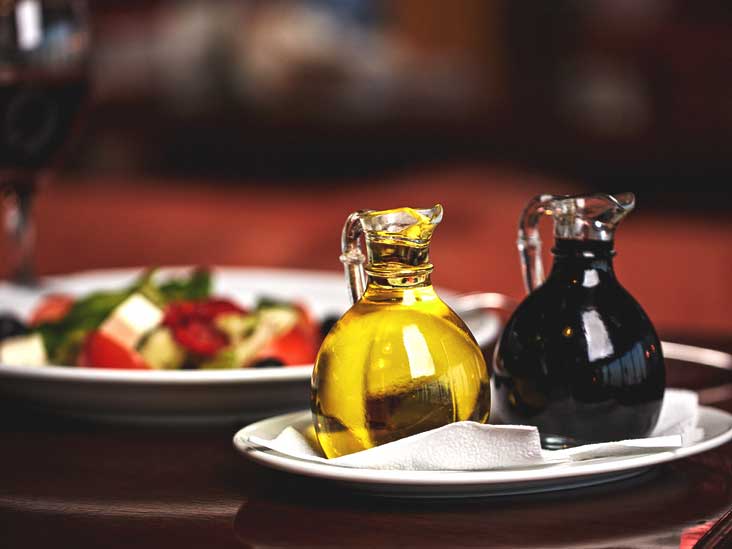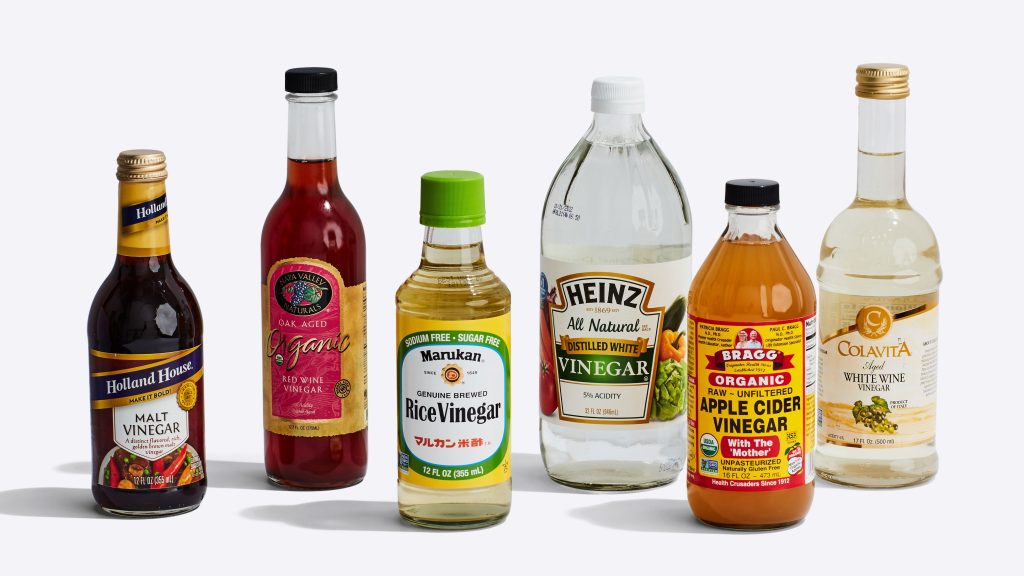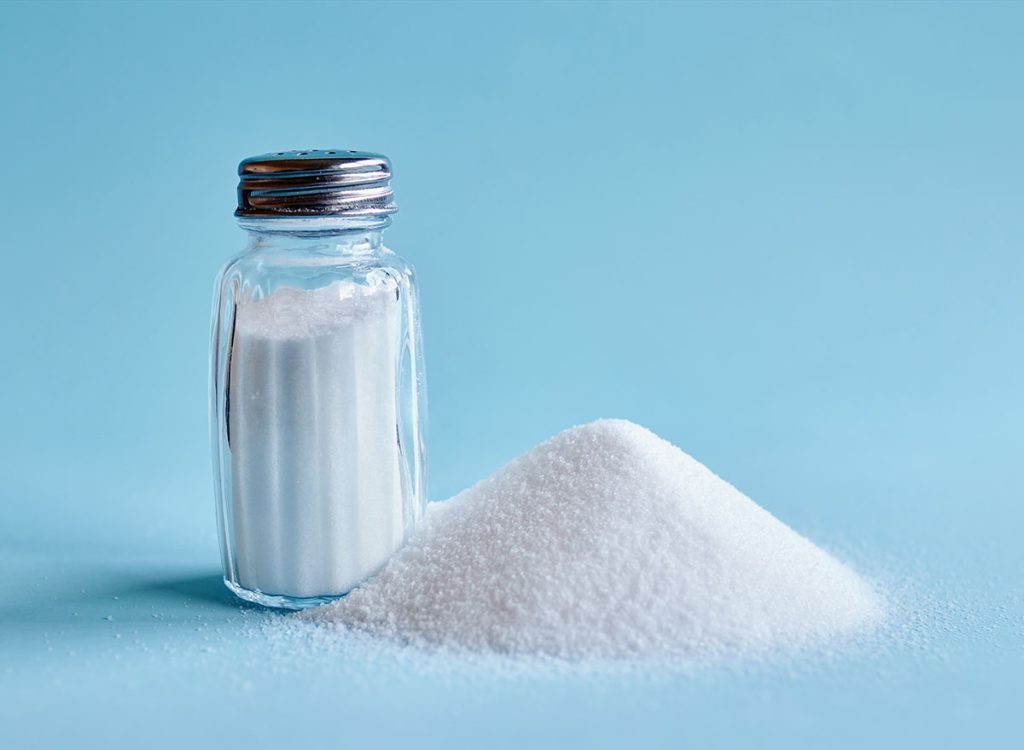Is Balsamic Vinegar High in Salt?

Almost all savory recipes require a combination of sour, sweet, salty, and fat, which vinegar and oil may provide. In addition, some vinegar has a salty flavor. Is balsamic vinegar salty, though?
Here’s what I’ve learned through the years of selling and purchasing it:
Balsamic vinegar isn’t usually salty, and depending on the brand, it might have anywhere from 0 mg to 5 mg of sodium per tablespoon. A tablespoon of balsamic salad dressing, on the other hand, contains between 100 and 300 milligrams of salt.

Even though the total sodium is modest, a range of 0 mg to 5 mg is still an extensive range.
In this post, we’ll delve into the world of Balsamic Vinegar. We’ll delve more into the sodium content of vinegar, as well as which spoonfuls of vinegar are ideal for avoiding salt and the many vinegar kinds.
Let’s get started!
Is there a lot of salt in balsamic vinegar?
No, in most cases. In theory, balsamic vinegar seldom contains more than 5 mg of sodium, making it sodium-free. So, while it isn’t always fully salt-free, it doesn’t have much sodium. However, the amount of salt it contains is mainly determined by the type and brand of balsamic vinegar you purchase. Balsamic vinegar comes in three varieties: traditional, commercial, and condiments.
While these have nearly the same salt content, condiment balsamic vinegar has more sodium than conventional Balsamic Vinegar. Traditional balsamic vinegar is an extremely rich vinegar exclusively made in two locations in Italy. It is considered a premium grade of vinegar.
The Italian regions of Modena and Emilia Romagna are these two. These sorts of balsamic vinegar aren’t always easy to come by, and they’re not necessarily cheap. On the other hand, balsamic vinegar in commercial and condiment versions is more widely available yet cheaply priced.
However, none of these varieties of balsamic vinegar contain a lot of salt. Vinegar has roughly 1 milligram of salt per tablespoon, making it sodium-free under the National Labeling and Educational Act since it contains less than 5 milligrams of salt.
Vinegar is therefore ideal for persons who must adhere to a low-sodium diet. This vinegar is extremely low in calories, with only approximately ten calories per tablespoon. However, the calorie value depends on what is added to the vinegar, such as any extra fruit such as raspberries.
Why does vinegar have a salty flavor?
Because our taste receptors confuse vinegar’s sour and sweet smells with salty, vinegar can sometimes taste salty. This is peculiarly true for individuals who aren’t used to vinegar’s diverse tastes and aren’t acclimated to it.
As you may know, humans have five distinct tastes: sweet, sour, bitter, salty, and umami. Umami can be defined as brothy, meaty, or savory for those unfamiliar with the term. Humans have difficulty discriminating between the tastes of sour and salty foods.
When you try vinegar, you might believe it’s pretty salty, but it’s somewhat sour. Vinegar has a sour or acidic flavor with a hint of sweetness. On the other hand, vinegar can’t be highly salty since it doesn’t contain enough salt, to begin with.
 Because humans have trouble distinguishing between salty and sour flavors, you may leverage this to your advantage when employing vinegar. Using vinegar instead of salt, you may give a meal a saltier flavor without adding extra salt. Vinegar can help you reduce your salt consumption while still keeping your dish flavorful.
Because humans have trouble distinguishing between salty and sour flavors, you may leverage this to your advantage when employing vinegar. Using vinegar instead of salt, you may give a meal a saltier flavor without adding extra salt. Vinegar can help you reduce your salt consumption while still keeping your dish flavorful.
It may be difficult to spice up simple food when you can’t add salt, so this is ideal for someone on a low sodium diet.
What is the salt content of balsamic vinegar dressing?
While balsamic vinegar salad dressing is created using balsamic vinegar, it has more salt, ranging from 100 to 300 mg per tablespoon.
Of course, the salt concentration varies significantly between brands, as it does with other culinary condiments. Several products are labeled as low-sodium balsamic dressings, such as One&Only’s 0 mg sodium balsamic dressing on Amazon.
Panera Bread’s balsamic dressing includes 84.9 mg of sodium per 2 tablespoons, making it a good choice for individuals on a low-sodium diet. (source)
Making our balsamic dressing, where we can regulate the salt amount, is, of course, the most excellent option for most of us. Use the following ingredients to make a basic recipe:
- a half-cup of extra-virgin olive oil
- One tablespoon balsamic vinegar
- One finely minced garlic clove
- season with freshly ground pepper to taste
- 1 tbsp mustard powder (yellow) (regular mustard will add sodium)
The One&Just balsamic vinegarette I described before is now sodium-free and keto-friendly. Most balsamic vinegar dressings, however, are not keto-friendly.
Is salt used in the production of balsamic vinegar?
No, in most cases. Salt is not used in the production of balsamic vinegar. Low-cost balsamic vinegar will comprise wine vinegar, grapes, and caramel coloring, containing a tiny quantity of salt. However, it is still called sodium-free because the amount is so tiny.
But, as I already stated, this relates to the various grades of balsamic vinegar. As previously stated, traditional balsamic vinegar (tradizionale balsamico) is manufactured entirely of grapes. I’m referring to the bottles that cost more than $130 per bottle.

The cost is fully justified. Many chefs would advise you to always splurge on a top-quality oil or vinegar if you have money to spend on meals. This is because original balsamic vinegar is simply grapes fermented for an extended period in a wooden barrel.
Wine vinegar, some grapes, and caramel coloring are common ingredients in vinegar sold in grocery stores. Although both spoonfuls of vinegar include salt, it’s generally in such a tiny amount that it’s deemed sodium-free.
Which vinegar contains the least amount of sodium?
The lowest sodium kinds of vinegar include malt, rice, and white wine vinegar. But, in general, the sodium content of different kinds of vinegar isn’t too diverse, and even when it is, it’s still called sodium-free.
But first, let’s look at the different varieties of vinegar and how much salt they contain.
This is the price per tablespoon.
- 4 milligrams Balsamic Vinegar
- 1-milligram apple cider vinegar
- 1 milligram of red wine vinegar
- 0 milligrams white wine vinegar
- 0 milligrams rice vinegar
- 0 milligrams malt vinegar
This isn’t an exhaustive list of vinegar kinds, but it’s a good starting point for your shopping trip. As you can see, different varieties of vinegar include a wide range of 0 milligrams. Although balsamic vinegar does not have the lowest sodium content, it is still superior to natural salt.
Rice, white wine, male, and regular vinegar are all options if you want to go all out and avoid salt. These are excellent choices, but while shopping, keep in mind that salt is only one factor to consider. While they might be low in sodium, they may be high in another area that does not match your diet or eating preferences.
Did I answer all of your questions on how salty balsamic vinegar is?
We discover that vinegar is sour rather than salty. Even if tiny sodium levels are present, practically every type of balsamic vinegar is deemed sodium-free. Balsamic vinegar is an excellent alternative for people on a low-sodium diet or who wants less salt in their food.
Vinegar may enhance the flavor of your cuisine without adding salt. You might not have considered whether or not balsamic vinegar is combustible. After all, you could need to know that for safety reasons, or you might wish to use vinegar to flambé.











